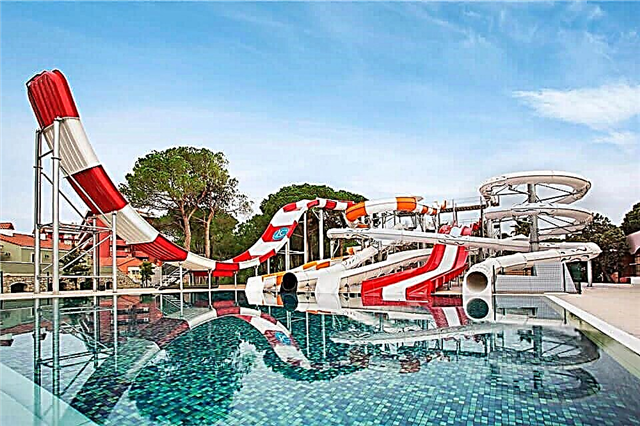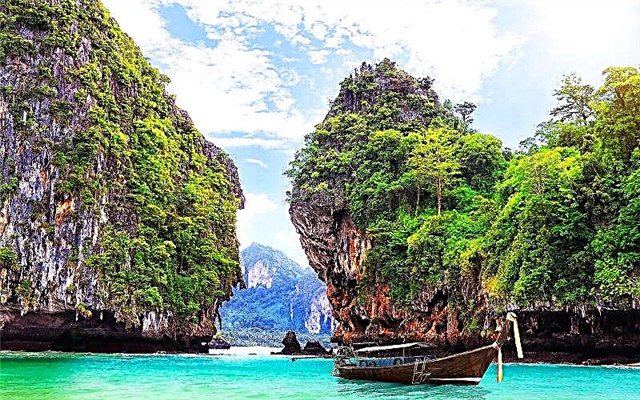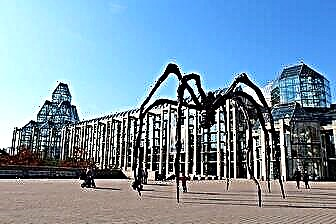The capital of Canada is considered one of the most interesting cities in the country, and at the same time in the whole of North America. There are 70 parks on its territory, so streets, quarters and squares are buried in greenery in summer, and in autumn they dress in stunning shades of yellow and crimson. It so happened that Ottawa is located at the junction of the English and French provinces. That is why it was destined to become the capital.
Ottawa is an amazingly calm and well-groomed city with a measured rhythm of life. There are no industrial plants with smoking chimneys, so it boasts a good environment. It is interesting that in the 19th century, the inhabitants of Montreal and Toronto considered Ottawa a boring and not worthy of attention town, but in the 20th century the situation changed dramatically. Thanks to active development and financial injections, the city has turned into a modern and comfortable place to live.

The best hotels and hotels at affordable prices.
from 500 rubles / day
What to see and where to go in Ottawa?
The most interesting and beautiful places for walking. Photos and a short description.
Parliament building of Canada
A neo-Gothic castle from the early 20th century, which houses the government of Canada. It is built of gray granite and somewhat resembles the Palace of Westminster, only in a more modest form. The central building of the building is the Peace Tower with a clock face, which is dedicated to the Canadians who died in the First World War. The architectural complex itself is called Parliament Hill. It includes a castle and a number of monuments dedicated to famous people.

Rideau Canal
The canal was dug in 1832, making it the oldest artificial waterway in North America. It connects the cities of Kingston and Ottawa. The canal is 202 km long and is designed for the passage of rather bulky ships. In the summer, tourist boats run along Rideau. In winter, there is a huge skating rink with a length of about 8 km.

Byward Market
One of the oldest and largest markets in Canada. It is a whole shopping area located in the city center. The plan of the market rows was developed by the military engineer D. Bai in 1826. For almost 200 years of its existence, Byward has grown significantly. The quarter was overgrown with hotels, restaurants, industrial enterprises. By the 19th century, it was already an important commercial and industrial area of Ottawa.

Notre Dame
Gothic Cathedral of Ottawa, named "Notre Dame" in good French tradition. Until 1841, a wooden church stood on the site of the temple. It was demolished to make way for new construction. The main part of the cathedral was ready by 1846, the spiers were installed 20 years later. Notre Dame is the oldest church in Ottawa. In 1990, the building was included in the list of National Monuments of Canada.

Canadian war museum
The history of the museum began in 1880 with a small collection of military artifacts; it received official status only in 1942. Since 1967, the collection has been located in the premises of the former State Archives, since 2005 - in a new building specially built for the 60th anniversary of the end of World War II. The exposition tells about the military history of Canada, as well as about the world wars of the 20th century.

National War Memorial of Canada
The monument was erected in 1939 on Confederation Square. In 1925, the authorities announced an international competition for the best project, in which all subjects of the British Empire could take part. The opening of the memorial took place in the presence of Monarch George VI. At first, it was dedicated to the Canadians who died during the First World War, after 1982 it became a monument to the victims of the Second World War and the Korean War.

National Gallery of Canada
One of Canada's premier art museums with a large collection of paintings, graphics, photography and sculpture. The main focus is on the work of Canadian artists. There are also works by masters from the USA and Europe. The gallery was founded in 1880 by Canadian Governor General Duke D. D. Campbell. Since 1988, the collection has been housed in a modern building designed by Israeli architect M. Safdi.

Canadian Museum of Natural History
Natural History Museum, which opened in 1990. It houses an outstanding collection of minerals, numbering several thousand samples, as well as an impressive collection of precious stones. The museum exhibits ancient fossils of fossil animals and plants. The herbarium with a huge number of plants (more than 500 thousand) deserves special attention.

Canadian Air and Space Museum
The collection is located at a training airfield near Ottawa's prestigious Rockliff Park. It was organized at the Canadian Air Force base in 1964. Here are a variety of aircraft from rare to modern designs. The museum often organizes exciting aviation shows, which attract a lot of spectators.

Canadian Museum of Civilization
Large history museum located across the river from Ottawa in the city of Gatineau. The bulk of the collection is on display in three sections: the Hall of Indigenous Peoples, the Grand Hall and the Canada Hall. Here visitors can see the history of Canada from ancient times to the present day. In the museum you can learn about the history of the indigenous population of the country, the period of European colonization, as well as important events of the modern era.

Bytown Museum
The museum collection is dedicated to the history of Ottawa and the Rideau Canal. The museum appeared in 1917 thanks to the efforts of the Women's Historical Society, which collected artifacts. Most of the exhibition consists of photographs, but there are also exhibits related to the laying of the canal. Since the middle of the XX century, the museum has been located in the building of the former commissariat - one of the first stone buildings in Ottawa.

National Arts Center
The center is located in a 1969 building erected in the brutalist style (one of the trends of modernism). Its four venues host concerts, festivals, theater performances, opera and ballet. The center actively supports aspiring artists, paying a lot of attention to educational programs. In 2006, the building was listed as a National Monument.

Chateau Laurier
City hotel and at the same time an interesting architectural monument. The building resembles a French castle, which is why it was named "Château Laurier". The hotel was built in 1912 from Indian limestone. The internal interior is not inferior to the external appearance, it is made with special grace. The halls are decorated with Tiffany stained glass windows and ornamental stucco moldings that have survived from the beginning of the century.

Rideau Hall
Residence of the Canadian Governor General and the residence of the English monarch during his visit to the country. Due to its secluded location, Rideau Hall feels more like a private mansion than an official residence. The building was built in Victorian style in 1838 during the era of Edward VII. It was intended for the industrialist T. McKay and his family. The mansion received its current status only in 1867.

Royal Canadian Mint
A working mint and museum located in downtown Ottawa. Visitors can see here not only an exhibition of coins and bars, but also watch the fascinating process of minting. The local shop sells collectibles made of precious metals. Now only commemorative money is produced at the mint, since the main production moved to Winnipeg in 1976.

Supreme Court Building of Canada
The Supreme Court sits in an Art Deco mansion with a clear Victorian reference.It was designed by E. Cormier. From the outside, the gray facade looks rather gloomy, especially against the background of the surrounding green lawns. The imposing walls, devoid of any decor, are crowned with a sloping roof. At the edges of the main staircase are the statues of Justice and Truth.

Canadien Thayer Center
Sports arena for various types of competitions, built in Ottawa in 1996. The stadium is home to the Ottawa Senators of the NHL. In addition to the playground, the complex includes a fitness center, a Hall of Fame and several restaurants. The arena hosted Stanley Cup and Ice Hockey World Championship matches. In addition to sporting events, the Canadien Tayer Center can host music concerts.

Diefenbunker
Nuclear shelters that were created during the Cold War in the 1960s at the direction of the country's government. In total, about 50 shelters were built. The main reserve bunker is located 30 km from Ottawa on the territory of a military base. This four-story shelter has now been converted into a museum, and visitors can see living evidence of the hysteria that was happening in the country due to the threat of a nuclear strike.

Alexandra bridge
A metal bridge over the Ottawa River, built in 1901. At first it was a railway, after the modernization of the 1950s, it turned into a car and pedestrian one. The Alexandra Bridge connects Ottawa and Gatineau. It is an example of industrial architecture of the early 20th century. The structure stands on massive structures - brackets that can withstand a very large weight.

Park Gatineau
The park is located on a huge area of 360 km². There are hundreds of kilometers of bike trails and dozens of hiking trails. As for entertainment, tourists can enjoy fishing in local lakes, canoeing, swimming, horseback riding and other active activities. The park has a marble cave, beaches, a mountain, as well as the Mackenzie King estate with picturesque gardens and cozy chalets.

Major's Hill Park
The park is located in the central part of Ottawa on a hill at the confluence of the Rideau Canal and the Ottawa River. In the first half of the 19th century, the houses of the builders of the waterway were located on the site of green spaces. By 1938, the area had turned into a well-kept city park. Due to its convenient location, Major's Hill is often the site of city festivals.

Arboretum Dominion
A research center and experimental farm practically in the heart of Ottawa. There is a botanical garden with 1,700 plant species, Fletcher's Wildlife Garden, a small pet zoo, an agriculture museum, a farmers' market and many other attractions. The Dominion came into being in 1889. Today it occupies a vast area of 26 hectares.

Hogs Back Falls
Artificial waterfalls on the Rideau River, which are located on the border with the channel of the same name. Previously, the place of Hogs Back was occupied by natural river rapids with a jet drop of about 2 meters. The waterfalls were created as a result of the construction of a canal and the construction of a dam. Despite its artificial origin, the stream looks quite natural and picturesque. Especially, this is noticeable in the fall in the frame of yellowed foliage.

Rideau Falls
The streams are located at the junction of the Rideau and Ottawa rivers. The natural landmark is close to the City Hall and the headquarters of the National Research Council. Due to the relatively weak power of the flow in winter, the waterfalls freeze completely and the jets of water turn into bizarre figures of ice. The spectacle is mesmerizing, especially if you admire it from the observation deck.

Beachwood
The cemetery where the mayors of Ottawa, prominent Canadian politicians, as well as the military and police are buried. The necropolis was founded in 1873 in the suburbs on a small plot of land. As the settlement grew, the burial turned out to be within the city limits. Today Bichuchuch is the largest cemetery in the area. There are many beautiful sculptures and tombstones installed here, but overall the place has a modest and neat appearance.












